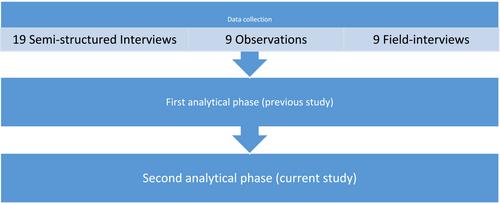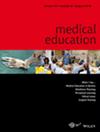Much remains unanswered regarding how clinical reasoning is learned in the clinical environment. This study attempts to unravel how novice medical students learn to reason, by examining how they make sense of the clinical patient encounter.
The current study was part of a greater research project employing constructivist grounded theory (CGT) to develop a learning model of clinical reasoning. Introducing the sensemaking perspective, as a sensitising concept, we conducted a second level analytic phase with CGT, to further advance our previously developed model. This involved re-examining collected data from semi-structured interviews, participant observations and field interviews of novice students during their early clinical clerkships.
A learning model of how medical students make sense of the patient encounter emerged from the analysis. At its core lie three interdependent processes that co-constitute the students' clinical sensemaking activity. Framing the situation is the process whereby students discern salient situational elements, place them into a meaningful relationship and integrate them into a clinical problem. Inquiring into the situation is the process whereby students gain further insight into the situation by determining which questions need to be asked. Lastly, taking meaningful action is the process whereby students carve out a pathway of action, appropriate for the circumstances. Tensions experienced during these processes impair clinical sensemaking.
The study provides an empirically informed learning model of clinical reasoning, during the early curricular stages. The model attempts to capture the complexity of medical practice, as students learn to recognise and respond to what constitutes the essence of a clinical situation. In this way, it contributes to a conceptual shift in how we think and talk about clinical reasoning. It introduces the concept of clinical sensemaking, as the act of carving a tangible clinical problem out of an often undetermined clinical situation and pursuing justified action.



